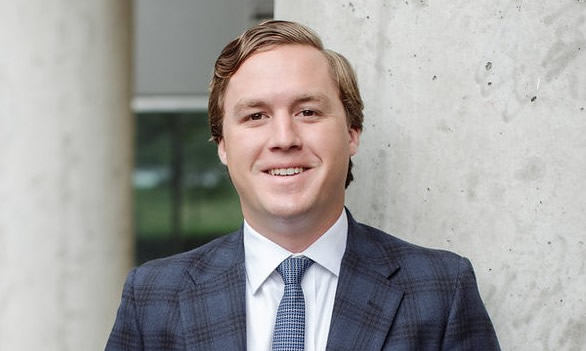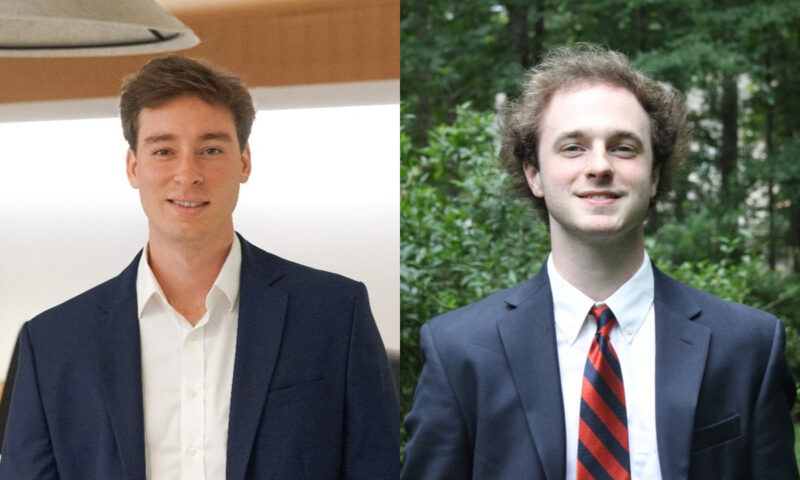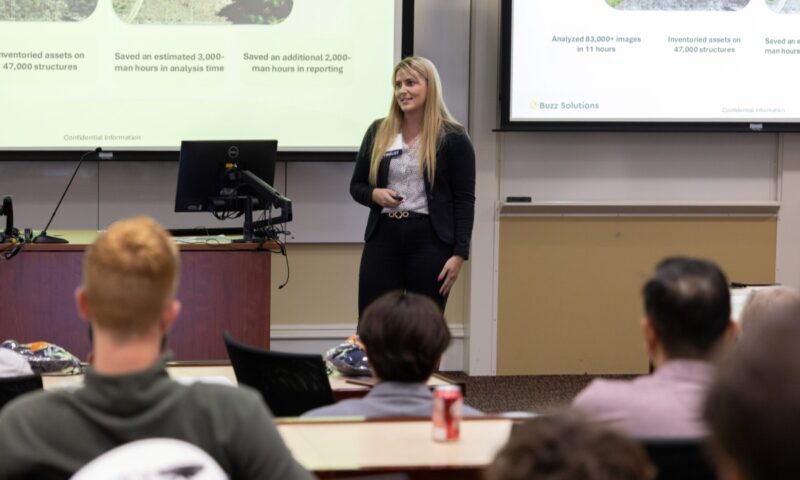 Philip Todd says that every day is different in the development business. It’s what excites him about his work: figuring out how to navigate challenges, discovering opportunities, and seeing a project through from concept to completion.
Philip Todd says that every day is different in the development business. It’s what excites him about his work: figuring out how to navigate challenges, discovering opportunities, and seeing a project through from concept to completion.
“What I really enjoy most about the real estate industry is the people I get to work with,” Todd says. “In the development role, I interact with a wide range of very talented people: an architect; a general contractor; a subcontractor; an engineer; a landscape designer; a hotel or restaurant operations team; and all the brokers, lenders, and equity partners.”
A Dallas, TX, native, Todd enjoys coordinating the many moving parts of a project, facilitating communications, and making sure everyone keeps a common goal in mind. “That’s what’s truly enjoyable, when all those pieces come together,” he says.
Since 2017, Todd has been at Todd Interests, a real estate development and investment firm his father, Shawn Todd, started 33 years ago, “on the heels of the SNL crisis.” He joined after growing and refining his skill set as an Associate at private equity firm Lone Star Funds, working for their credit lending platform “LStar Capital,” and earlier as an Analyst at Bank of the Ozarks, creating real estate lending transactions in aggregate of $1.2 billion across all property types.
An esteemed member of the Advisory Board for UVA’s Center for Real Estate and the Built Environment, Todd brings a wealth of experience with him to the role, having been engaged in development and investment opportunities representing all real estate asset types across the United States, with a strong focus in his home state of Texas, “especially in the last 10 to 15 years. It’s been such a great investment market that we decided to kind of double down in our backyard,” he says.
Remaking Dallas
In addition to the host of development prospects that Dallas holds, Todd says there are some unique aspects of the built environment in his hometown that regularly present a challenge.
Some of those dilemmas he faced during and after the pandemic were mostly relative to supply chain issues and labor shortages that impacted construction and hospitality. Those issues have shifted from the pandemic to interest rates having an outsized impact on the construction and real estate industries, with Todd noting that construction costs have risen significantly.
“Those are two areas that have added challenges in Dallas. But thankfully, we’re lucky to have a really strong economy; job growth and population growth here are some of the best in the country,” he says.
Concerning the built environment locally, Todd is understandably proud of his city, pointing out that Dallas can claim that six Pritzker award-winning architects have built towers in its downtown skyline. But its downtown has emerged from a particularly singular situation that grew out of a decision made in the 1960s, when Vincent Ponte, an urban planner from Montreal, created Downtown Dallas’s master plan.
Ponte mimicked what had been established in his often chilly city by designing a pedestrian network of tunnels underneath Dallas to combat the over 100-plus degree summer weather with an air-conditioned system throughout the entirety of Dallas’s downtown.
“While that sounds good on its face, it actually led to the demise of Downtown Dallas,” Todd explains, detailing how hundreds of thousands of people were suddenly walking below the city, causing all the retailers and restaurants at street level to lose customers. “It led to boarded-up buildings and storefronts, and coupled with the flight to the suburbs, it was really the reason that downtown was stifled for so long.”
To undo the decades of damage to the vibrancy of the area, a private-public partnership called Downton Dallas Inc. was founded that subsequently launched an initiative roughly 15 years ago called the Downtown 360 Plan. “One of the steps of that plan was to close off all these tunnels and stop pedestrian access to them. They have done that, and it’s been immensely successful,” says Todd about the turnaround above ground, which at its nadir saw fewer than a hundred people living downtown in the 1980s. Today, downtown has a population approaching 18,000: “That number is the best anywhere in the country for residential growth on a percentage year-by-year basis. Now that we have an actual mixed-use environment there of residential offices, retail restaurants, and more, downtown is actually really booming.”
Another difficulty the city faced and overcame was a dearth of parks. In fact, airline manufacturer Boeing overlooked Dallas when relocating their headquarters in the 2000s, choosing Chicago, partly because of Dallas’s lack of green spaces.
“Dallas took that as a challenge,” Todd says. “There’s an organization here called Parks for Downtown Dallas, which has since put new city parks in the area over the last decade and a half. It’s been the largest amount of green space added to a downtown area in the U.S.”
Industry-Wide Issues
Other obstacles Todd sees shaping the real estate industry that represent a large portion of his firm’s business have been office-to-residential conversions and office-to-hotel conversions; Todd Interests has been able to convert about 4.5 million square feet of office to hotel and mixed-use residential properties.
“When those conversions are done in the core of downtown areas—when you find a unique building that has a floor plan that works and has great bones to it—you can make that a viable business plan,” he says, noting that he’s seen many similar deals taking place across the country in cities such as Atlanta, Phoenix, and Pittsburgh.
The problem? “Some buildings have such large footprints of 50,000-foot-plus that it makes it really hard to convert that space into apartments, hotels, or other uses. You have really deep floorplans without a lot of natural light. There are only so many storage units you can put per floor in a building. Nationally, one challenge we’re going to have in the built environment is obsolete office buildings that don’t work for conversions and aren’t viable for office space either,” Todd says.
Regarding the processes of certain initiatives that often get held up by archaic systems, Todd says there is genuine need for new ideas when it comes to city permitting for projects—down to the outdated computer systems workers are forced to navigate in their work. “We’ve seen a big backlog in some of the areas that we work within cities and municipal governments. It’s ripe for innovation and could be streamlined. In Dallas, we’ve got great city staffers here who are hard-working. But if they’re not given the tools to do their jobs, then it’s nearly impossible to do that.”
Of course, homelessness also remains a core issue for Todd. “We need to take an initiative nationwide in our cities to care for the homeless and for the mentally ill,” he insists. “Cities need to feel empowered to speak love and truth to people and not to just turn a blind eye. Personally, I think we need to have programs on national, state, and local levels that care for these people.”
Under Overstreet’s Tutelage—On and Off Grounds
Todd came to his chosen industry well-prepared from his time on Grounds. Having graduated with a degree in American Politics and Government from the College of Arts & Sciences, he rounded out his education with a minor in Urban Environmental Planning from the Architecture School and considers himself fortunate to have taken the Real Estate Track through the Commerce School, “even though I wasn’t enrolled in that. I just pestered [Professors] George Overstreet and Don King enough at the time to allow me to sit in and take the classes.”
Speaking of Overstreet, Todd doesn’t hold back: “George is a good leader, a good friend, a good professor, and a good mentor. He’s dedicated the majority of his life to educating and mentoring students inside and outside the classroom.” Relating a story about his early UVA career, Todd recalls the start of their friendship, when Overstreet called him up, seemingly out of the blue.
“‘What are you doing now?’ he asked. I said, ‘Well, I’m heading to class in a little bit.’ His response was, ‘Can you skip it?’”
It turns out that Overstreet wanted to take him along to check out a historic property outside of town. Todd agreed to go: “I needed to take him up on that offer, and that’s how we connected: We went out and marched around a property. He’s curious, and his passion for learning has been something that’s encouraged me over the years.”
Todd also credits Overstreet with bringing business leaders into the classroom from different segments of the real estate industry, ranging from CEOs of public companies to owners of small family business offices. “That was really important to me as a student to see,” he says. “There are so many different segments within real estate, and there are so many different avenues of what you can focus on.”
Exploring those many aspects to the industry are something that he feels UVA’s Center for Real Estate and the Built Environment embodies. It’s an essential nexus for the subject that Todd says was missing when he was a student.
“It’s been fun to see the Center come full circle, because it’s exactly what I would have been looking for as an undergrad. I had to piece that knowledge together myself. When you blend all of those departments together and all the curricula together, it’s going to be something amazing. It’s not just going to influence the lives of students and their careers, but it’s also going to change the built environment as a whole,” Todd says, referencing his excitement for the research being undertaken by faculty and the grants being procured to fund it, which he sees serving as a magnet to attract talent, which will in turn, benefit students.
“I’m honored that I was asked to join the Advisory Board,” he says, pointing out that he fully supports the Center and its mission. “I think it’s going to grow rapidly, and more people are going to see how important this is as an area of our University.”


